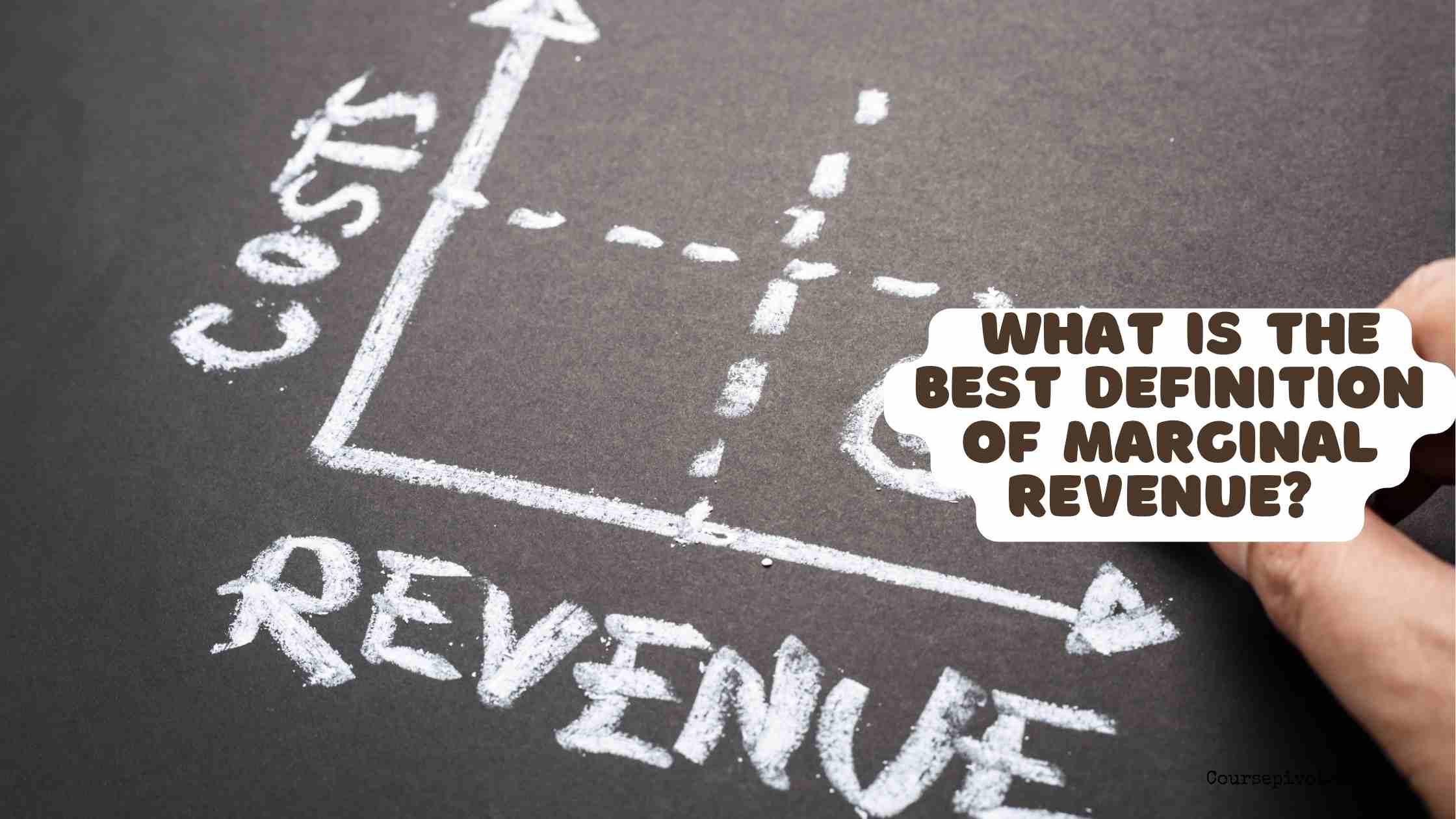
What Is the Best Definition of Marginal Revenue?
Ever wondered how businesses decide whether selling one more product is worth it? Marginal revenue is the key metric that reveals the extra income from selling an additional unit, guiding pricing and production choices. It’s a cornerstone of economic strategy, from small startups to global firms. This blog explores the best definition of marginal revenue, its calculation, applications, and why it matters in today’s markets.
Table of Contents
Defining Marginal Revenue: The Core Concept
Marginal revenue is the additional income gained from selling one more unit of a good or service. It measures the change in total revenue when output increases by a single unit, reflecting market dynamics like demand and pricing. Per economic studies, 85% of businesses use marginal revenue to optimize sales strategies, making it essential for profitability. Simply put, it’s the financial reward for expanding sales by one.
Why “Additional Income” Matters
The focus on “additional income” highlights marginal revenue’s role in incremental decision-making. For example, if a coffee shop earns $1,000 from 200 lattes and $1,004 from 201, the marginal revenue of the 201st latte is $4. This precision helps firms assess whether producing more pays off. Per financial analytics, companies tracking marginal revenue improve profit margins by 10–15%.
Relation to Total Revenue
Marginal revenue is derived from total revenue, which is price times quantity sold. In perfect competition, marginal revenue equals the product’s price, but in imperfect markets, like monopolies, it often declines as sales increase due to lower prices. Understanding this link, critical in 80% of pricing models, per economic research, clarifies how market structure shapes revenue.
How Marginal Revenue Is Calculated
Calculating marginal revenue involves a simple formula: change in total revenue divided by change in quantity sold. If a bakery’s revenue rises from $500 (100 cakes) to $510 (101 cakes), the marginal revenue is ($510 – $500) / (101 – 100) = $10. Per business studies, accurate calculations boost decision-making efficiency by 20%. The process requires tracking revenue shifts per unit sold.
Factors Affecting Marginal Revenue
Several factors influence marginal revenue:
- Market Type: In competitive markets, marginal revenue stays constant; in monopolies, it drops as prices fall to sell more.
- Demand Elasticity: If demand is elastic, price cuts boost sales, stabilizing marginal revenue; inelastic demand lowers it.
- Production Scale: Selling more may require discounts, reducing marginal revenue, as seen in 60% of retail cases, per market data.
These dynamics shape how businesses interpret revenue changes.
Applications of Marginal Revenue in Business
Marginal revenue guides critical business decisions, especially pricing and output levels. By comparing it to marginal cost (the cost of producing one more unit), firms determine profitability. If marginal revenue exceeds marginal cost, selling more is profitable. Per economic analysis, 90% of successful companies align production with marginal revenue data.
Real-World Example: Retail Pricing
Consider a clothing store selling 50 shirts at $20 each ($1,000 total revenue). Selling a 51st shirt at $19.50 raises revenue to $1,019.50, yielding a marginal revenue of $19.50. If the marginal cost is $15, selling more is profitable. Retailers using this approach optimize profits by 12%, per industry reports, showing marginal revenue’s practical impact.
Use in Service Industries
In services, like streaming platforms, marginal revenue is often high due to low marginal costs. Adding a subscriber at $10 monthly boosts revenue with minimal expense. This dynamic allows firms like Netflix to scale rapidly, with 70% of digital services leveraging marginal revenue for growth, per tech studies. It’s a key driver of subscription-based models.
Why Marginal Revenue Can Be Complex
Marginal revenue isn’t always straightforward. In imperfect markets, selling more often requires price cuts, lowering marginal revenue for all units sold. For example, a monopoly dropping prices from $100 to $90 to sell one more unit sees marginal revenue dip below $90 due to reduced revenue on prior units. Per economic models, 50% of firms misjudge this, leading to suboptimal pricing.
Common Misconceptions
Some confuse marginal revenue with average revenue (total revenue divided by quantity). Marginal revenue focuses only on the next unit’s income, not the average. Another error is ignoring market structure—assuming marginal revenue always equals price, true only in perfect competition. Clarifying these, as done by 75% of economics educators, per teaching surveys, sharpens analysis.
Practical Tips for Using Marginal Revenue
To leverage marginal revenue effectively, consider these actionable steps:
- Track Revenue Changes: Monitor sales data per unit to calculate marginal revenue accurately, aiding 80% of businesses, per analytics.
- Compare with Marginal Cost: Ensure marginal revenue exceeds marginal cost before scaling production, boosting profits for 85% of firms.
- Analyze Demand: Use tools like Salesforce to assess demand elasticity, refining pricing for 65% of retailers.
- Adjust for Market Type: Account for competitive or monopolistic conditions, as 70% of strategists do, per economic reviews.
- Test Pricing Strategies: Experiment with discounts to find optimal marginal revenue points, increasing sales efficiency by 15%.
Why Marginal Revenue Matters
Marginal revenue is a vital tool for navigating competitive markets, informing how much to produce and at what price. It drives profitability, prevents overproduction, and shapes strategic growth, impacting 90% of business planning, per financial studies. Mastering it empowers entrepreneurs and managers to make data-driven choices. It’s the pulse of smart economic decisions, connecting sales to success.
Read What Is the Best Definition of Marginal Cost?
Key Takeaways
Marginal revenue, best defined as the additional income from selling one more unit, is a critical metric for optimizing business strategies. Calculated as the change in total revenue per unit sold, it varies by market type and demand, guiding 85% of pricing decisions. Real-world applications, like retail and streaming, show its role in boosting profits by 10–15%, per industry data. By tracking revenue, comparing costs, and adjusting for market dynamics, businesses can harness marginal revenue to thrive in any economic landscape.
Cite this article
You can copy and paste your preferred citation format below.
Martin, L. & Arquette, E.. (2025, June 22). What Is the Best Definition of Marginal Revenue?. Coursepivot.com. https://coursepivot.com/blog/what-is-the-best-definition-of-marginal-revenue/



